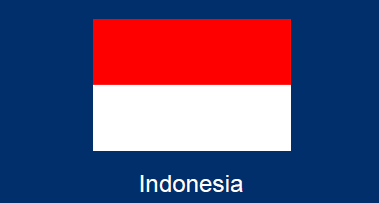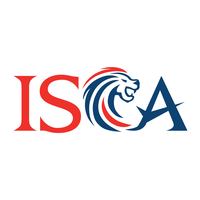Section 201 (16) of the Companies Act requires the financial statements of a Singapore incorporated company to be accompanied by a Directors’ Statement. The Directors’ Statement accompanies the financial statements and the auditor’s report, and is therefore, other information (OI) within the scope of SSA 720 (Revised), The Auditor’s Responsibilities Relating to Other Information. For many private companies, the Directors’ Statement may be the only document that constitutes the OI.
The objectives of the auditor, having read the OI, are:
a) to consider whether there is a material inconsistency between the OI and the financial statements;
b) to consider whether there is a material inconsistency between the OI and the auditor’s knowledge obtained in the audit;
c) to respond appropriately in accordance with SSA 720 (Revised) when material inconsistencies appear to exist, or OI appears to be materially misstated; and
d) to report in accordance with SSA 720 (Revised).
The following table provides guidance on whether material inconsistencies exist for each of the circumstances described and how the auditor should report them:
|
DIRECTORS’ STATEMENT |
AUDITOR’S REPORT |
MATERIAL INCONSISTENCIES EXIST? |
HOW TO REPORT? |
|
|
Scenario 1: Directors’ Statement states that financial statements give a true and fair view; Auditor’s Report contains a qualified opinion due to a material misstatement in the financial statements |
||||
|
The directors opine that the financial statements are drawn up so as to give a true and fair view of the financial position and performance of the company. |
The auditor issues aqualifiedopinion due to a material misstatement in the financial statements. |
Yes, with respect to the matter giving rise to the qualified opinion. |
Customise illustration 7 in Appendix 2 of SSA 720 (Revised). |
|
|
Scenario 2: Directors’ Statement states that financial statements give a true and fair view; Auditor’s Report contains a qualified opinion due to inability to obtain sufficient appropriate audit evidence |
||||
|
The directors opine that the financial statements are drawn up so as to give a true and fair view of the financial position and performance of the company. |
The auditor issues aqualifiedopinion due to an inability to obtain sufficient appropriate audit evidence. |
The auditor would not be able to conclude whether or not the OI is materially misstated with respect to the matter giving rise to the qualified opinion. |
Customise illustration 6 in Appendix 2 of SSA 720 (Revised). |
|
|
Scenario 3: Directors’ Statement states that financial statements give a true and fair view; Auditor’s Report contains an adverse opinion |
||||
|
The directors opine that the financial statements are drawn up so as to give a true and fair view of the financial position and performance of the company. |
The auditor issues anadverseopinion. |
Yes, with respect to the matter giving rise to the adverse opinion. |
Customise illustration 7 in Appendix 2 of SSA 720 (Revised). |
|
|
Scenario 4: Directors’ Statement states that the company can pay its debts as and when they fall due; Auditor’s Report contains an unmodified opinion when a material uncertainty (MU) exists and disclosure in the financial statements is adequate |
||||
|
The directors opine that there are reasonable grounds to believe that the company will be able to pay its debts as and when they fall due. |
a) The auditor concludes that management’s use of the going concern basis of accounting is appropriate but a MU exists. b) As adequate disclosure of the MU is made in the financial statements, the auditor issues anunmodifiedopinion and includes a “Material Uncertainty Related to Going Concern” section in the auditor’s report. |
No. |
Customise illustration 1, 2 or 3 in Appendix 2 of SSA 720 (Revised) as appropriate. |
|
|
Scenario 5: Directors’ Statement states that the company can pay its debts as and when they fall due; Auditor’s Report contains an qualified opinion when a MU exists and financial statements are materially misstated due to inadequate disclosure |
||||
|
The directors opine that there are reasonable grounds to believe that the company will be able to pay its debts as and when they fall due. |
a) The auditor concludes that management’s use of the going concern basis of accounting is appropriate but a MU exists. b) As adequate disclosure of the MU isnotmade in the financial statements, the auditor issues aqualifiedopinion because the auditor concludes that the effects on the financial statements of the inadequate disclosure are material but not pervasive to the financial statements. (Same as scenarios 4 and 6 except for the inadequate disclosure of MU) |
Inadequate disclosure of MU in the financial statements does not necessarily mean that the company will not be able to pay its debts. Hence, the matter giving rise to the qualified opinion maynotcreate a material inconsistency with the directors’ opinion on the company’s ability to pay its debts. However, if the directors opine that the financial statements are drawn up so as to give a true and fair view of the financial position and performance of the company, this would be inconsistent with the qualified opinion issued by the auditor. In this case, this material inconsistency would need to be reported in the OI section of the auditor’s report(See Scenario 1). |
Customise illustration 7 in Appendix 2 of SSA 720 (Revised). |
|
|
Scenario 6: Directors’ Statement states that the company can pay its debts as and when they fall due; Auditor’s Report contains an adverse opinion when MU exists and is not disclosed in the financial statements |
||||
|
The directors opine that there are reasonable grounds to believe that the company will be able to pay its debts as and when they fall due. |
a) The auditor concludes that management’s use of the going concern basis of accounting is appropriate but a MU exists. b) As the financial statementsomit the required disclosuresrelating to the MU, the auditor issues anadverseopinion because the effects on the financial statements of such omission are material and pervasive. (Same as scenarios 4 and 5 except for the non-disclosure of MU) |
Non-disclosure of MU in the financial statements does not necessarily mean that the company will not be able to pay its debts. Hence, the matter giving rise to the adverse opinion maynotcreate a material inconsistency with the directors’ opinion on the company’s ability to pay its debts. However, if the directors opine that the financial statements are drawn up so as to give a true and fair view of the financial position and performance of the company, this would be inconsistent with the adverse opinion issued by the auditor. In this case, this material inconsistency would need to be reported in the OI section of the auditor’s report(See Scenario 3). |
Customise illustration 7 in Appendix 2 of SSA 720 (Revised). |
|
|
Scenario 7: Directors’ Statement states that the company can pay its debts as and when they fall due; Auditor’s Report contains an adverse opinion as going concern basis of accounting is inappropriate |
||||
|
The directors opine that there are reasonable grounds to believe that the company will be able to pay its debts as and when they fall due. |
The auditor concludes that management’s use of the going concern basis of accounting in the preparation of the financial statements is inappropriate and the auditor issues anadverseopinion(assuming serious concerns over liquidity issues). |
Yes. |
Customise illustration 7 in Appendix 2 of SSA 720 (Revised). |
|
Read more





.png?sfvrsn=dd675fd5_2)
.jpg?sfvrsn=d4038e84_0)

-(1).png?sfvrsn=db949de5_0)
-(5).png?sfvrsn=3162fbc9_0)

/business-management-global-connection/istock-1167579720-c.jpg?sfvrsn=ff93f9a5_2)
/audit-assurance/istock-1169206203-c.jpg?sfvrsn=1d6f9b25_2)

/professionals/istock-845530100-c.jpg?sfvrsn=46efdedd_2)
/ethics-and-professionalism/istock-1141115724-c.jpg?sfvrsn=4e54d691_2)

/audit-assurance/istock-818732836-c-v3.jpg?sfvrsn=ae44e7b7_0)




.png?sfvrsn=905ee1bd_0)
/legal-secretarial/istock-866706340-c.jpg?sfvrsn=d7f57b8c_2)